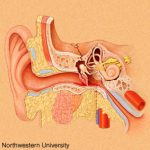I’m usually not too keen on animal studies. Many times, the translation from animal to human just doesn’t work out. However, a study published last week on nerve injury caught my interest.
Nerves don’t heal well. The problem is that the neurons at the injured nerve endings tend to die back. Small vesicles form that seal the damaged ends, such that repairs that occur after sealing do not reliably re-establish continuity.
A group of researchers at the University of Texas at Austin and Vanderbilt experimented with manipulating the micro-environment at the injured ends of the nerve to control vesicle formation and action.
The researchers have practiced a new technique on about 200 rats, severing a number of peripheral nerves, including the sciatic. After injury, a calcium-free hypotonic salt solution containing methylene blue (an antioxidant) was injected into the area. This shuts down the mechanism for vesicle formation, preventing the body from prematurely closing the cut ends of the neurons.
Next, the cut nerve ends were approximated using microsuture technique without any sharp debridement. Polyethylene glycol was then injected into the repaired area. This serves to dehydrate the outer membranes of the neurons and to induce them to flow back together. Finally, an isotonic calcium rich solution was applied to the repair to induce vesicle formation and fusion to close any remaining holes in the plasmalemma.
The video above shows the remarkable results. Most rats began moving the injured extremity immediately upon awakening from anesthesia. Nearly all had regained 60-70% of function within 2-4 weeks of injury.
Bottom line: If this pans out (in the somewhat distant future), expect to see possible interventions beginning in the field immediately after injury, starting with injections of the hypotonic calcium-free solution. Surgeons will take it from there. This is an animal study to keep an eye on!
Video: Rats walking after sciatic nerve injury (courtesy NewScientist.com)
Reference: Rapid, effective, and long-lasting behavioral recovery produced by microsutures, methylene blue, and polyethylene glycol after completely cutting rat sciatic nerves. J Neuroscience Res, published online 3 Feb 2012.


